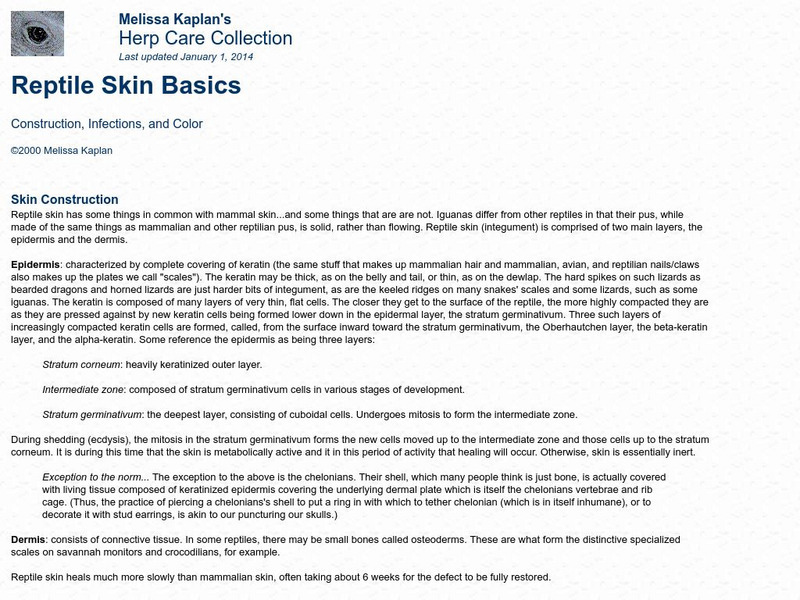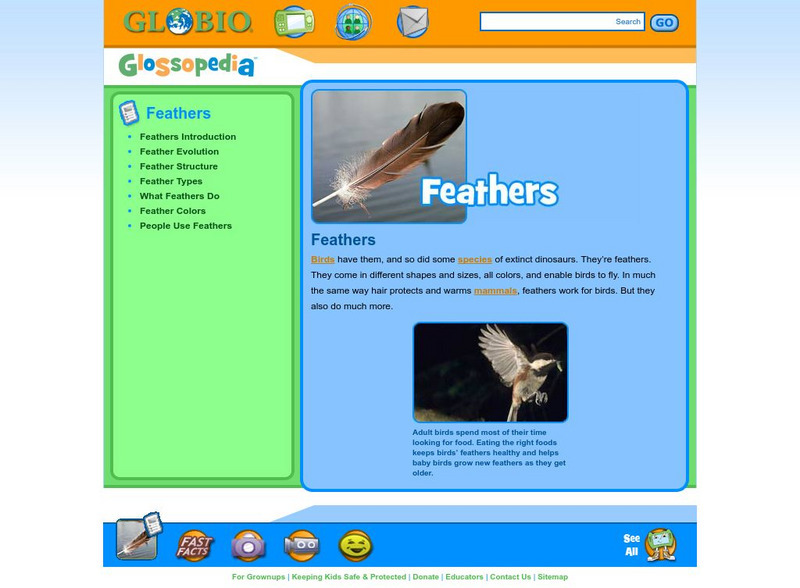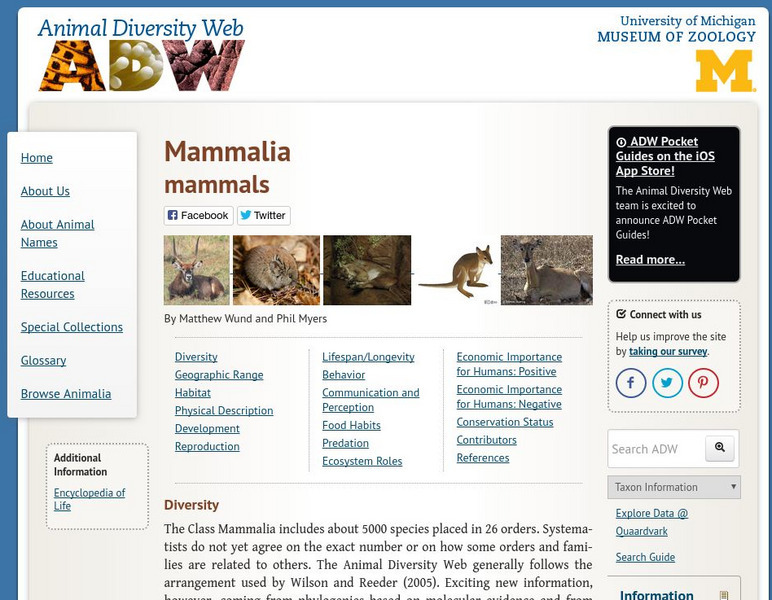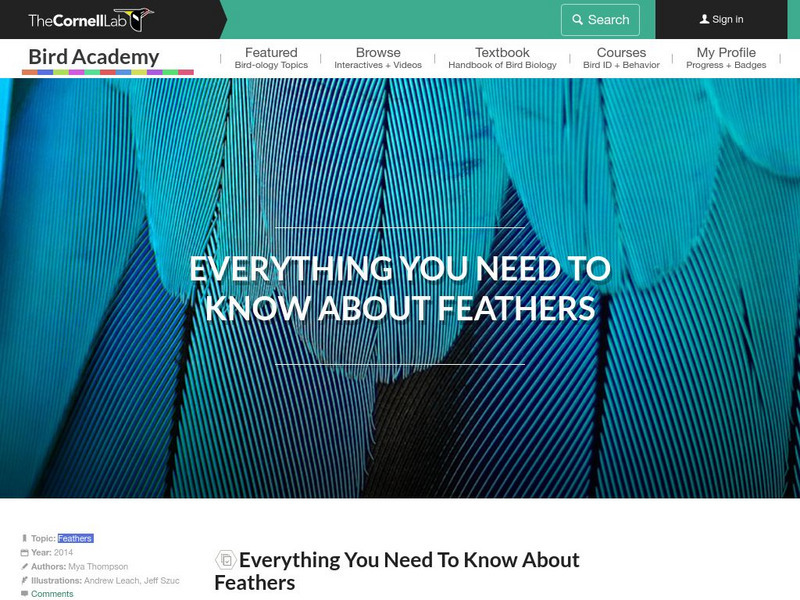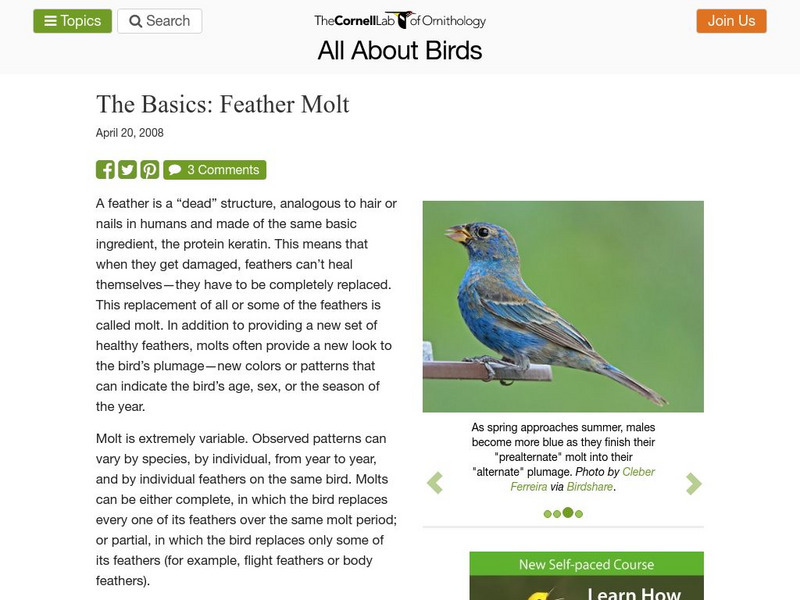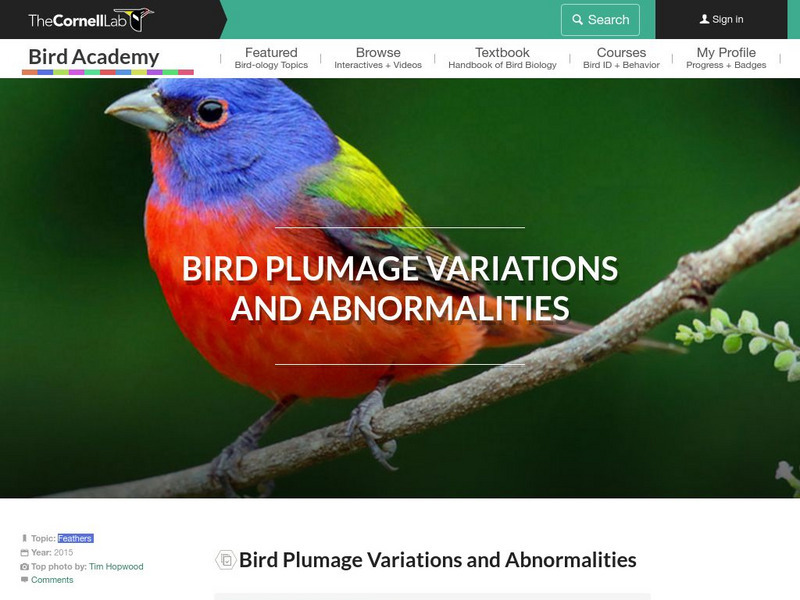Curated OER
Trout Cookies
Students explore the external anatomy of a fish. In this anatomy and adaptations lesson, students look at an image of a trout and identify its various external features including fins, eyes, spots, parr marks and lateral line. Students...
San Diego Natural History Museum
San Diego Natural History Museum: Shark School: Shark Parts
A very good external anatomy site for sharks in particular.
PBS
Nova Online: Island of the Sharks
A beautiful site that incorporates a story with your interactive exploration of shark anatomy. Use this site for it's great images and fun learning activity.
Other
Melissa Kaplan: Reptile Skin Basis
A good introduction to the skin of reptiles. Describes some of the general characteristics of the scales. Information on various diseases is included. Also links to many related articles are listed.
Canadian Museum of Nature
Canadian Museum of Nature: Bird Identification Clues
This resource will help you develop your birdwatching skills. It includes how to find birds, basic tips and how to use field marks such as patterns and colours to help distinguish species.
Globio
Glossopedia: Feathers
Birds have them, and so did some species of extinct dinosaurs. They're feathers. They come in different shapes and sizes, all colors, and they enable birds to fly. Lots of information can be found in this article.
University of California
Ucmp: Aves More on Morphology
A good discussion of the major adaptations of the skeleton of birds in order to adapt to flight.
Environmental Education for Kids
Eek!: Fun Fur Facts
Discover whatever you wanted to know about one of the things that makes a mammal a mammal: hair. Hair types and coats of color are discussed.
PBS
Nova: The Hunt
Learn more about the six senses that sharks use to hunt. Descriptions and pictures of each sensory organ are provided.
National Audubon Society
National Audubon Society: Audubon Adventures: Whose Beak, Whose Feet Game
A game where students must match beaks and feet to the correct birds.
University of Florida
Florida Museum of Natural History: Body Features and Measurements of a Bony Fish
Contains labeled diagrams showing bony fish external anatomy.
Other
National Aviary: Curriculum: Bird or Dinosaur? The Feather: Three Jobs
Activity leads you through an investigation of three key functions of feathers: insulation, flight, and display.
Regents of the University of Michigan
Animal Diversity Web: Mammalia
For an overview of the anatomy and characteristics of mammals, visit this Animal Diversity Website. Discusses characteristics not found in other animals, the function of their hair, and their production of milk.
Cornell Lab of Ornithology
Cornell Lab of Ornithology: Bird Feather Color
Yes, birds can see color and this site delves into pigmentation, color abnormalities, and structural colors of birds' feathers.
Cornell Lab of Ornithology
Cornell Lab of Ornithology: Feather Structure
This site provides a detailed explanation of the structure of bird feathers. Topics include feather topography, types of feathers, and feathers and flight.
Cornell Lab of Ornithology
Cornell Lab of Ornithology: Molting
Why do birds molt? How many times a year do they molt? When do birds molt? These questions and more are answered on this comprehensive site.
Cornell Lab of Ornithology
Cornell Lab of Ornithology: A Calliope Hummingbird Molts Its Gorget Feathers
Striking photos are presented in this colorful site that show the molting stages of the Calliope Hummingbird.
Cornell Lab of Ornithology
Cornell Lab of Ornithology: Bird Feather Plumage Variations
Plumage variations can be based on a number of factors. This brief but informative examines single plumage patterns, seasonal variations, and sexual dimorphism.
Other
Pet place.com: The External Anatomy of a Fish
A very good overview of the class of fish, which includes a very good description of the external structure.
Merriam-Webster
Merriam Webster: Dictionary Illustration: Feather
Basic diagram illustrating five main structures of a feather.
University of Florida
University of Florida: Fin Features and Measurements of Sharks
Some very specific information on the measurements and identifying characteristics of sark fins.
University of Florida
University of Florida: Head Features and Measurements of Sharks
Good diagrams of the external features and labels of the head of a shark, the largest member of the chondrichthyes class.
University of California
Ucmp: Chondrichthyes
Site gives a quick but decent description of the anatomy of the skin and fins.





